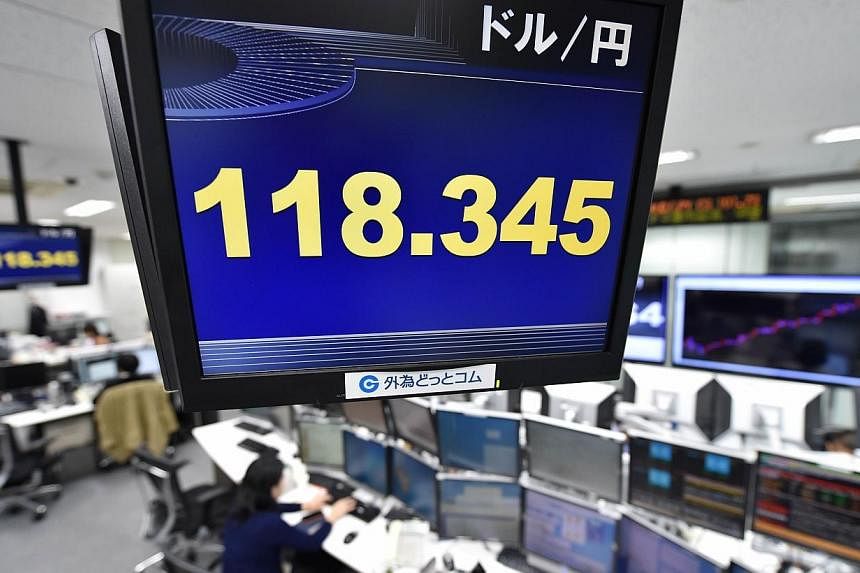The Japanese currency is sinking.
On Thursday, the yen fell to a fresh seven-year low of 118.98 against the US dollar, two days after Prime Minister Shinzo Abe called a snap election and announced his decision to delay a sales-tax increase because Japan had fallen back into recession.
The yen has lost about 20 per cent of its value in the past two years - 8 per cent since the BOJ stunned markets on Oct. 31 by announcing it will expand its already massive asset-buying programme to try to stimulate the moribund economy. This had the effect of further weakening the yen and making Japanese exports less expensive to foreign buyers.
Some economists have forecast that the yen will fall another 15 per cent by the end of next year, arguing Japan will need to launch further easing measures to reflate its economy. Another factor is the divergence in US and Japanese monetary policy, with the Federal Reserve ending its own massive cheap money programme and signalling it will raise interest rates next year.
In response, investors are shedding their holdings of the Korean won, Singapore dollars and other Asian currencies, betting that the yen's dramatic fall against the dollar will force policymakers to cut the value of their currencies in order to stay competitive - raising the spectre of a beggar-thy-neighbour currency war.
Here are three reasons, though, why we may be able to avoid this:
1. The competitiveness of other Asian currencies depends on more than what happens to the yen.
The current weightings of the yen in the broad effective exchange rate indices of the Bank of International Settlement (BIS) for other Asian countries are generally not large, analysts from Capital Economics point out. The yen counts for just 5.3 per cent for India to 20.5 per cent for the Philippines. This helps to explain why many other currencies in Asia have not appreciated much, if at all, in real trade-weighted terms since the end of 2011, despite a drop of nearly a third in the real trade-weighted value of the yen.
Admittedly, some currencies - notably the Korean won - track the yen more closely because companies in the respective nations compete in similar export markets. But this does not alter the broad conclusion that the real effective exchange rates of other Asian currencies will continue to be only partly affected by a further plunge in the value of the yen, Capital Economics argues.
2. Some Japanese exporters are resisting price cuts.
Although the yen has fallen sharply, export volumes have not risen much as some exporters have avoided cutting the foreign currency prices of their shipments in order to restore their profitability in yen - limiting the impact of yen depreciation.
Japanese exporters resisted price cuts in much the same way between 2001 and 2006, when the yen depreciated almost 40 per cent in real effective terms. But back then international demand was strong. It remains to be seen how long they can hold out today before really going for their rivals' lunch.
3. Japan's Asian neighbours prefer "verbal intervention"
There has been little evidence of actual widespread currency intervention to date with policymakers trying instead to "talk down" their currencies, with some success. The Korean won, for example, has appreciated by less than half as much as the US dollar against the yen since the end of the second quarter of this year.
Such "verbal" intervention is likely to remain their preferred approach - provided that the further expected weakness occurs against the backdrop of reasonably healthy growth in the global economy, says Capital Economics.
If not, all bets are off.


